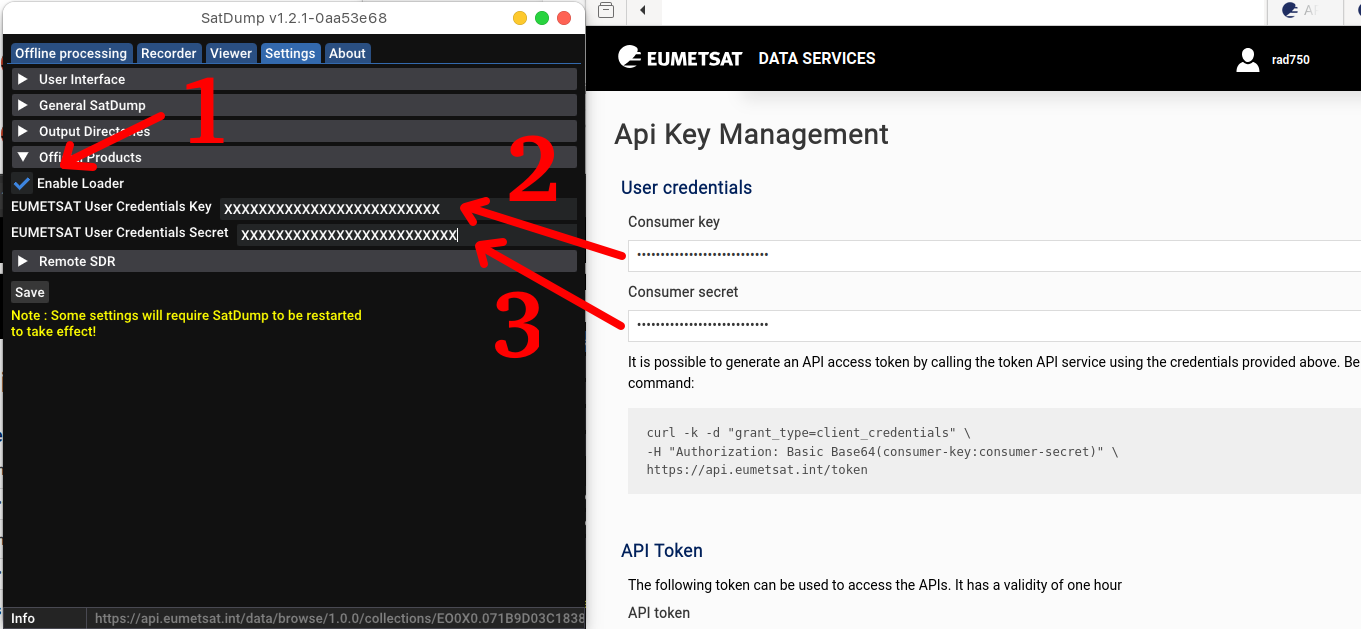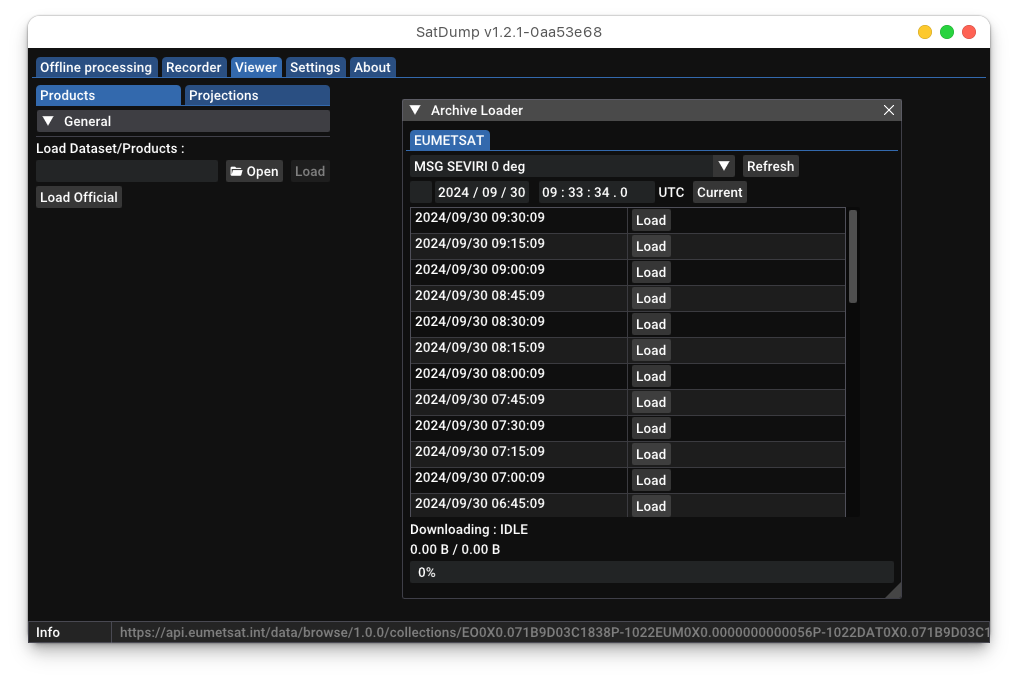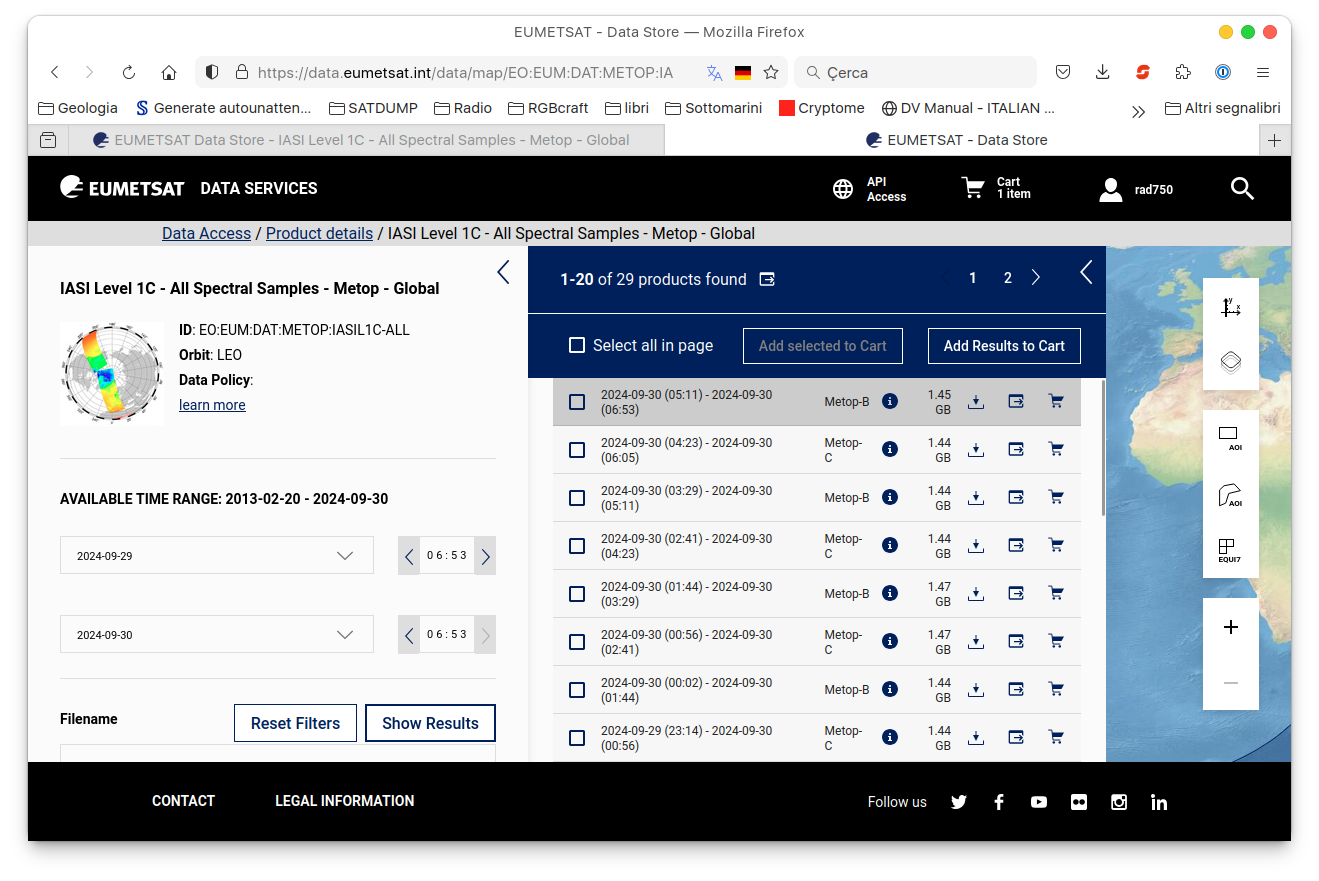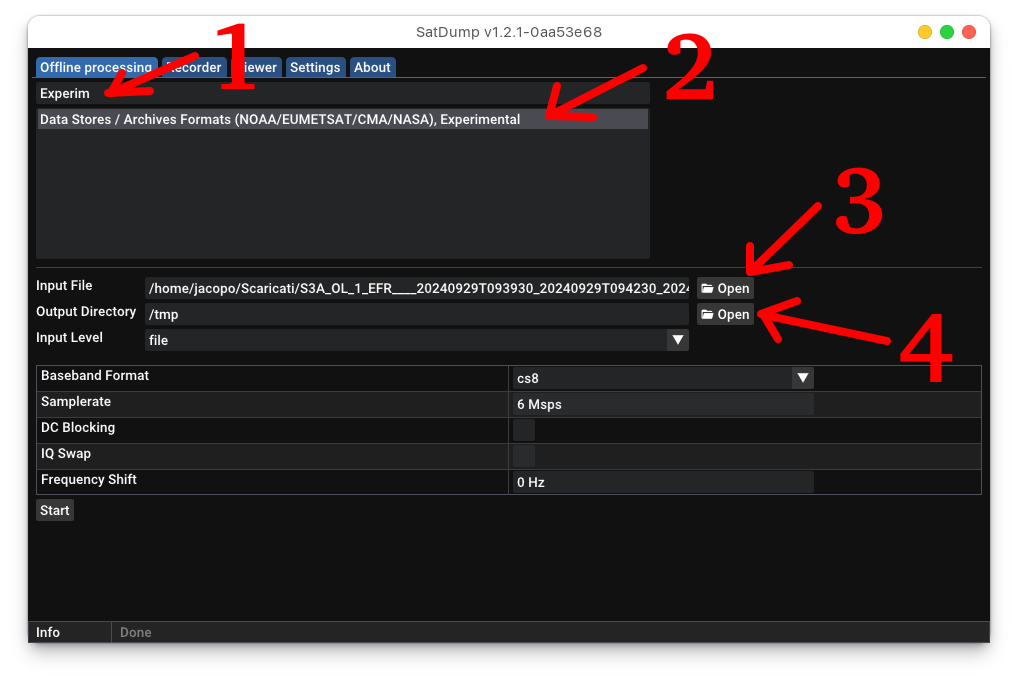Opening official products with SatDump
Also available in: Italiano 🇮🇹, Français 🇫🇷
Introduction
SatDump is generally regarded as one of the best software available for satellite data reception, decoding and processing. It is usually used to decode data obtained via direct receptions or dumps from satellites, such as the APT, LRPT or HRPT signals, then processing it into final products such as weather forecasts and more.
However, sometimes it is not possible or feasible to directly receive data from a satellite. For example, the desired object to be observed might be located outside your station's footprint, or else it might simply be a past event that needs to be subject to reanalysis.
Satellite operators usually keep a comprehensive archive of all the data obtained via their spacecraft, generally accessible at no charge.
However, the methods typically used to process these data are usually very cumbersome, often making use of poorly documented or outdated software. SatDump changes this!
Obtaining SatDump
If you don't have it already, download the latest SatDump nightly build and install it. If you have already installed SatDump, it is recommended to update it to the latest nightly build.
Note that at the moment (September 30th, 2024) support for official products is to be considered experimental: testing is welcome and if any bug is found, it should be reported to the GitHub issues. Make sure to always have the latest nightly installed before reporting a bug!
Archive Loader vs Offline Decoder
SatDump provides two ways to access official products, an integrated Archive Loader and an Offline Decoder.
The Archive Loader only supports EUMETSAT's data at the moment and requires an EUMETSAT API key to work.
The Offline Decoder is also more convenient for repeated work, as it saves you the time of redownloading the data each time.
Supported products
This is a list of all currently supported products.
| Product | Satellite | Instrument | Link | Notes |
| High Rate SEVIRI Level 1.5 Image Data - MSG - 0 degree | MSG | SEVIRI | EO:EUM:DAT:MSG:HRSEVIRI | Open the .nat (native) file |
| High Rate SEVIRI Level 1.5 Image Data - MSG - Indian Ocean | MSG | SEVIRI | EO:EUM:DAT:MSG:HRSEVIRI-IODC | Open the .nat (native) file |
| Rapid Scan High Rate SEVIRI Level 1.5 Image Data - MSG | MSG | SEVIRI | EO:EUM:DAT:MSG:MSG15-RSS | Open the .nat (native) file |
| FCI Level 1c Normal Resolution Image Data - MTG - 0 degree | MTG | FCI | EO:EUM:DAT:0662 | Open the ZIP file as downloaded (SIP) |
| FCI Level 1c High Resolution Image Data - MTG - 0 degree | MTG | FCI | EO:EUM:DAT:0665 | Open the ZIP file as downloaded (SIP) |
| AVHRR Level 1B - Metop - Global | Metop | AVHRR | EO:EUM:DAT:0665 | Open the .nat (native) file |
| IASI Level 1C - All Spectral Samples - Metop - Global | Metop | IASI | EO:EUM:DAT:METOP:IASIL1C-ALL | Open the .nat (native) file |
| AMSU-A Level 1B - Metop - Global | Metop | AMSU-A | EO:EUM:DAT:METOP:AMSUL1 | Open the .nat (native) file |
| MHS Level 1B - Metop - Global | Metop | MHS | EO:EUM:DAT:METOP:MHSL1 | Open the .nat (native) file |
| OLCI Level 1B Full Resolution - Sentinel-3 | Sentinel-3 | OLCI | EO:EUM:DAT:0409 | Open the ZIP file as downloaded (SIP) |
Using the Archive Loader
Obtaining access & keys
First of all, you need to obtain an EUMETSAT API key. To do this, go to EUMETSAT EOPORTAL and register an account.
Then, log in with that account. If you need METEOSAT (MSG/MTG) data with latencies of less than 1 hour, you need to also apply for a specific license (follow instructions there).
Note that if you already use EUMETCAST, then you don't need to register again. Just log in with your normal EUMETCAST account.
After obtaining your license, you can then proceed to the EUMETSAT API website and obtain your Consumer Key and Consumer Secret strings.
Setting up SatDump
Now, open SatDump and go to the Settings tab. Then:
- Tick the
Enable Loaderbox. - Copy the
Consumer Keyfrom the EUMETSAT API page into theEUMETSAT User Credentials Keyfield in SatDump. - Copy the
Consumer Secretfrom the EUMETSAT API page into theEUMETSAT User Credentials Secretfield in SatDump.
You are now ready to use the Archive Loader!

Downloading satellite data with the Archive Loader
In the Viewer tab, you will find a Load Official button through which you can access the Archive Loader.
You can then select the desired data product and apply a date filter. When you have found the right data, you can load it with the Load button.

Once the download is complete, the data will automatically be loaded into the viewer for processing.
Using the Offline Decoder
The Offline Decoder is useful if you need to work on the same data repeatedly, or if you need to work on the data without an Internet connection.
Obtaining access
First of all, you need to obtain an EUMETSAT account. To do this, go to EUMETSAT EOPORTAL and register an account.
Then, log in with that account. If you need METEOSAT (MSG/MTG) data with latencies of less than 1 hour, you need to also apply for a specific license (follow instructions there).
Note that if you already use EUMETCAST, then you don't need to register again. Just log in with your normal EUMETCAST account.
Finding the data
To obtain data, follow the links from the table of supported products.
Then, click on the Download button. Apply any filters, such as data or area of interest, and click on Show Results.
Click on the ⤵️ icon to download the desired data.

Opening the data
IMPORTANT: For data marked in the table of supported products as «Open the .nat (native) file», the ZIP file must be opened and the contained
.natfile MUST be extracted and selected in SatDump for the decoding to work properly.
Conversely, data marked as «Open the ZIP file as downloaded (SIP)» MUST NOT be extracted and the ZIP file must be selected in SatDump for the decoding to work properly.
- Open SatDump and search for
Data Storesin theOffline Processingsearch box. - Select the
Data Stores/Archives Formats (NOAA/EUMETSAT/CMA/NASA), Experimentalpipeline. - Select the file downloaded from EUMETSAT as
Input File - Select an empty directory of your choice as
Output Directory.

Once the decoding is complete, the data will automatically be loaded into the viewer for processing. Click on the Viewer tab to access it.
Processing the data
Once the data is loaded, it can then be processed as if it were any other data normally received with SatDump.
For example, RGB composites can be selected, map overlays can be applied and projections can be performed.

For more details, please refer to the SatDump documentation
Version: v1.0.0